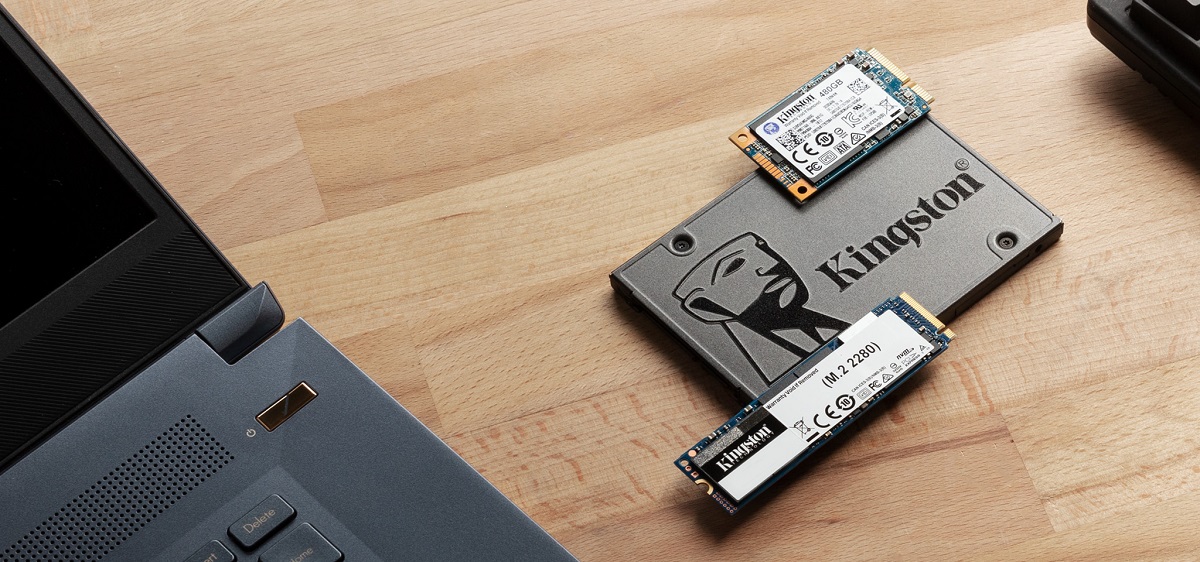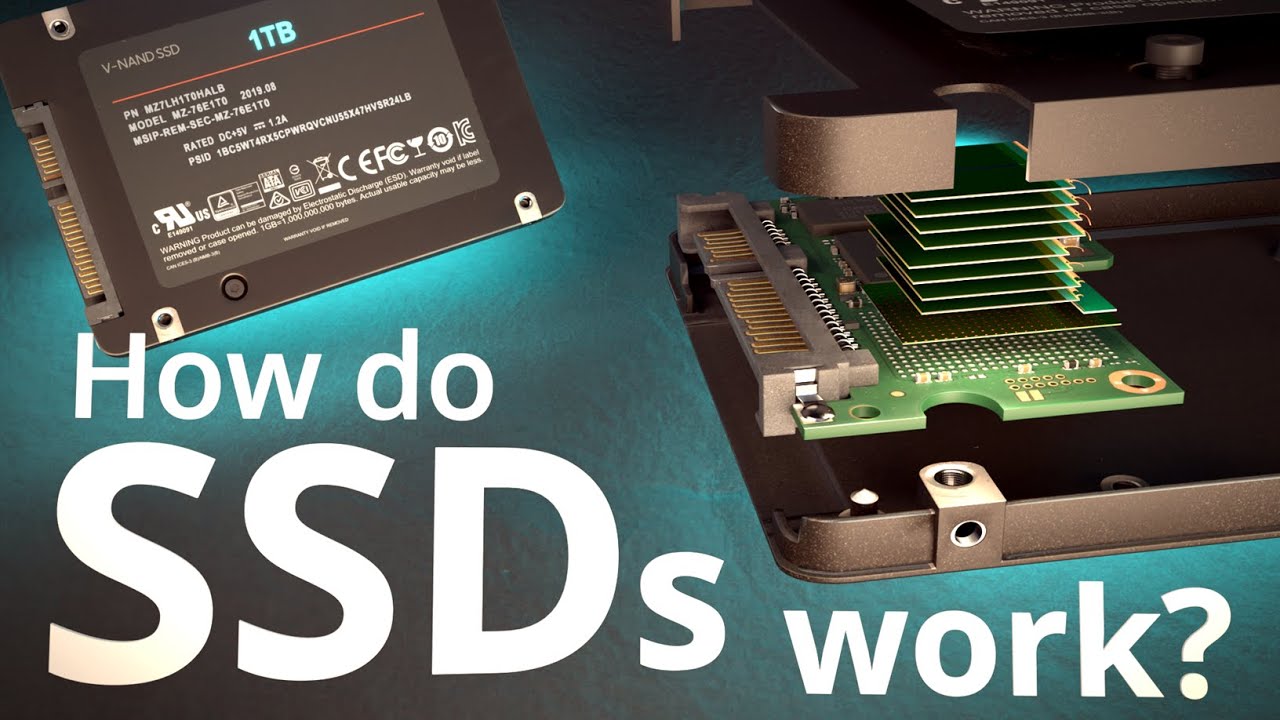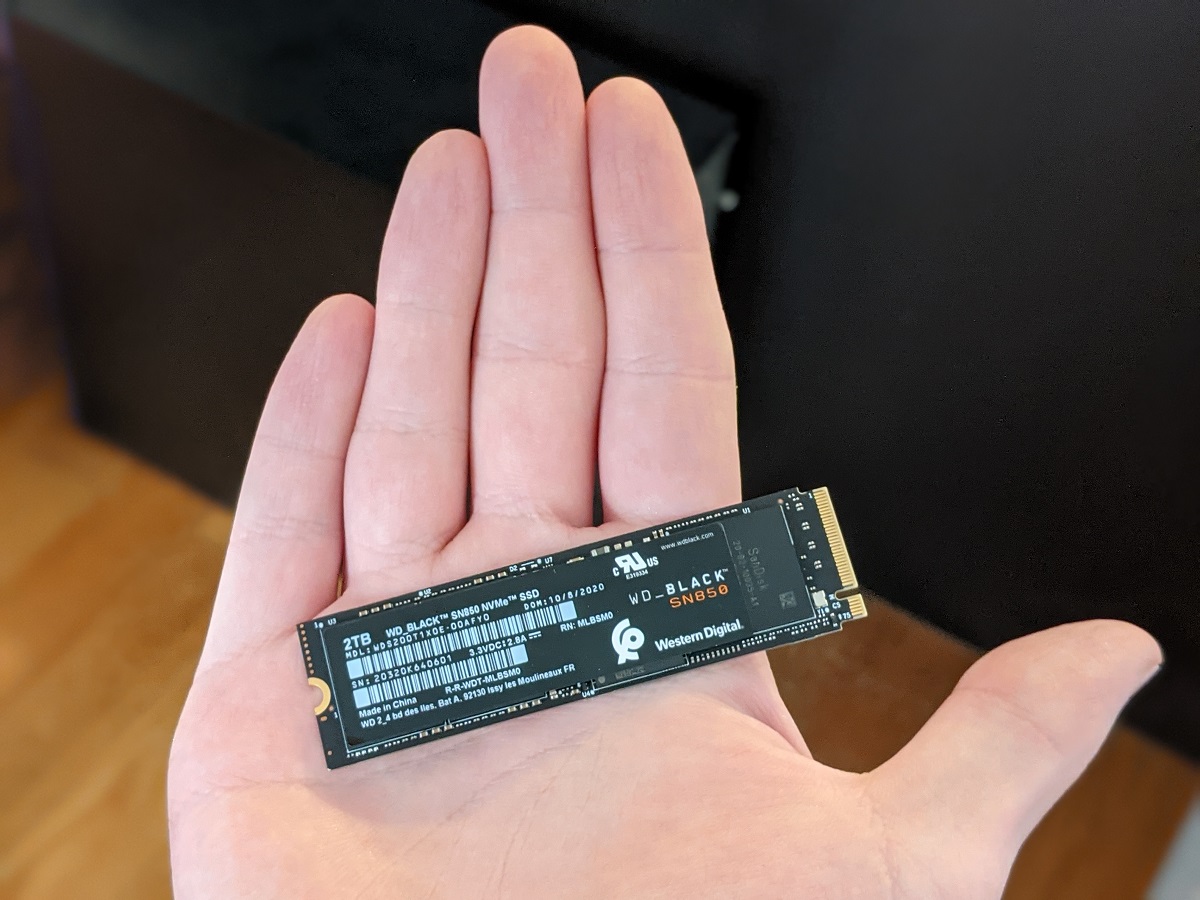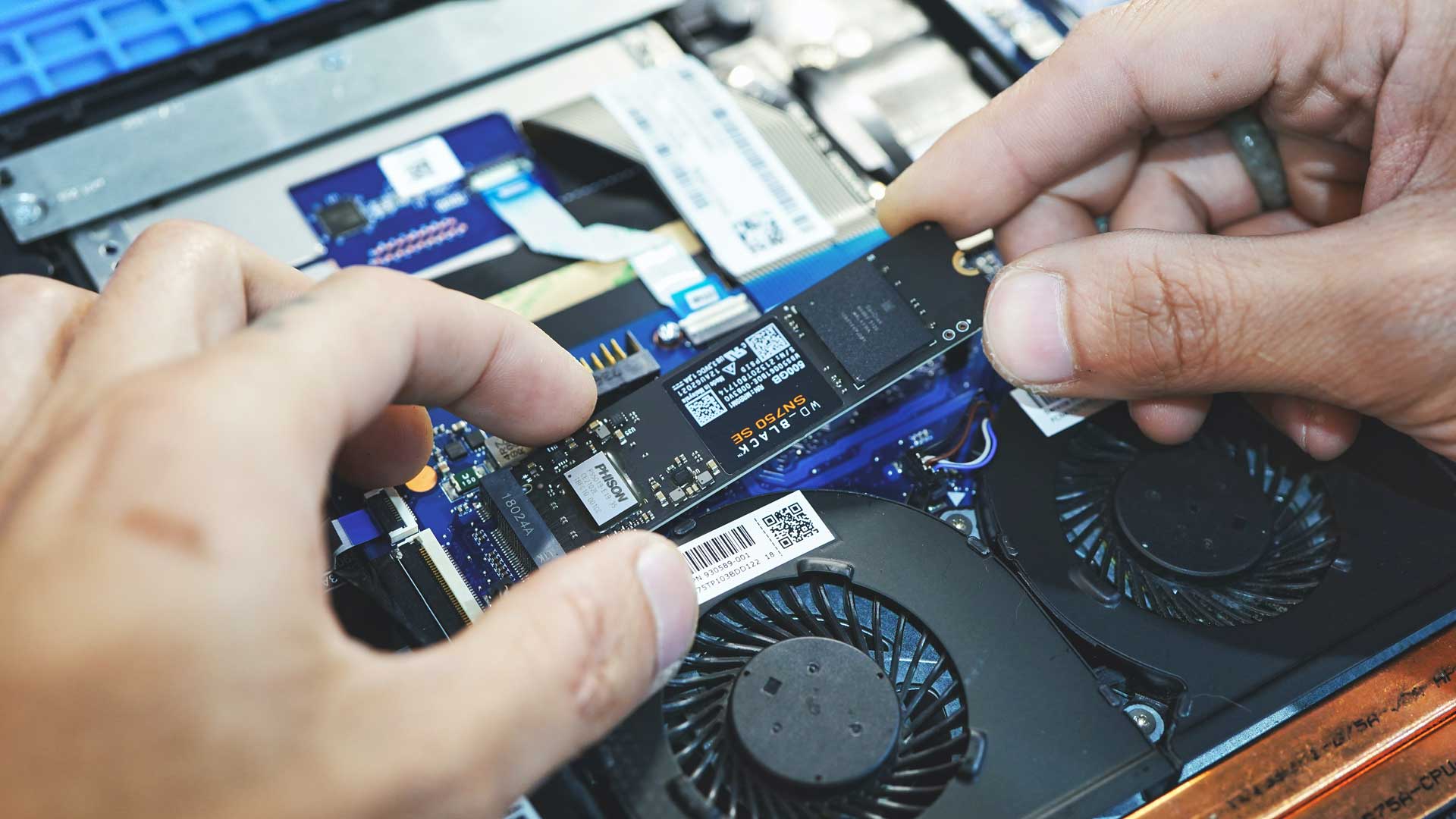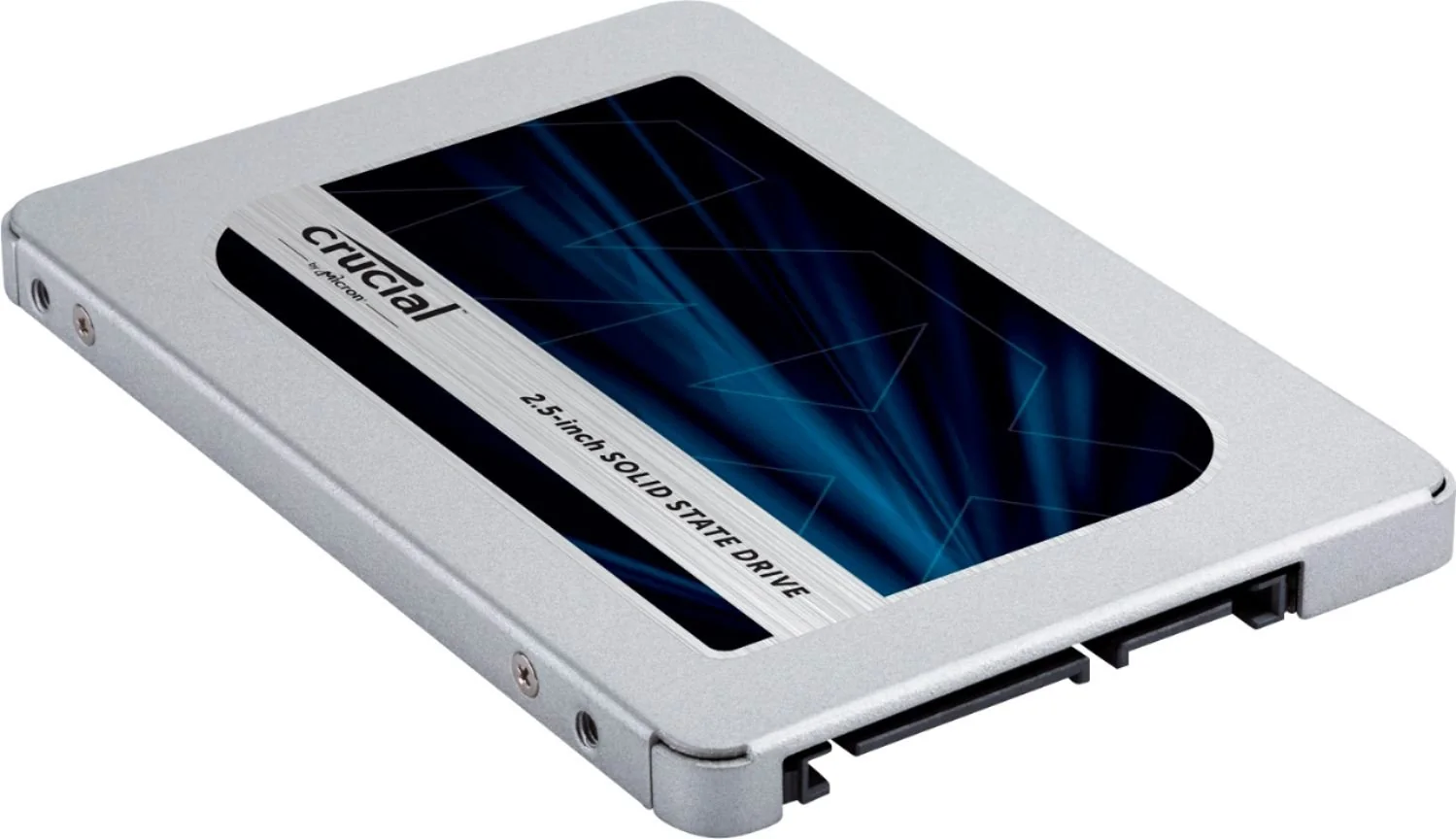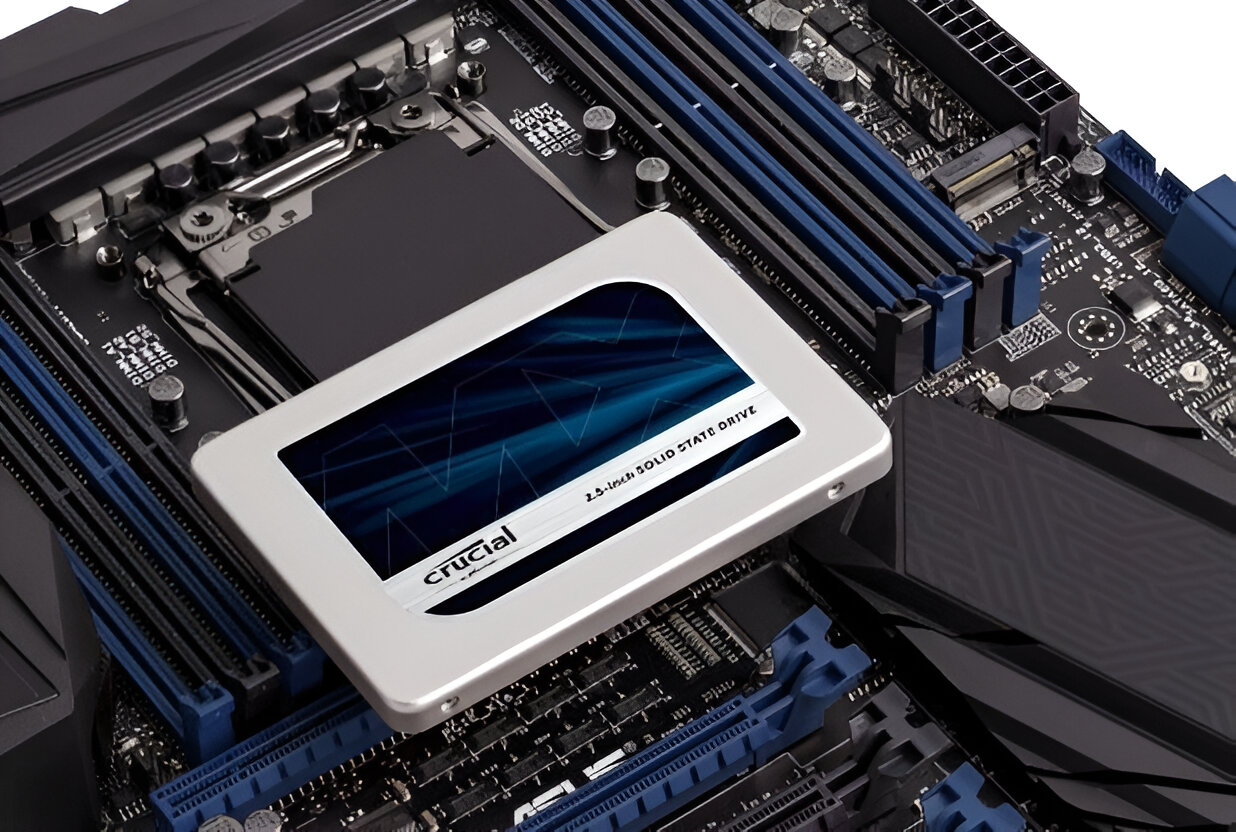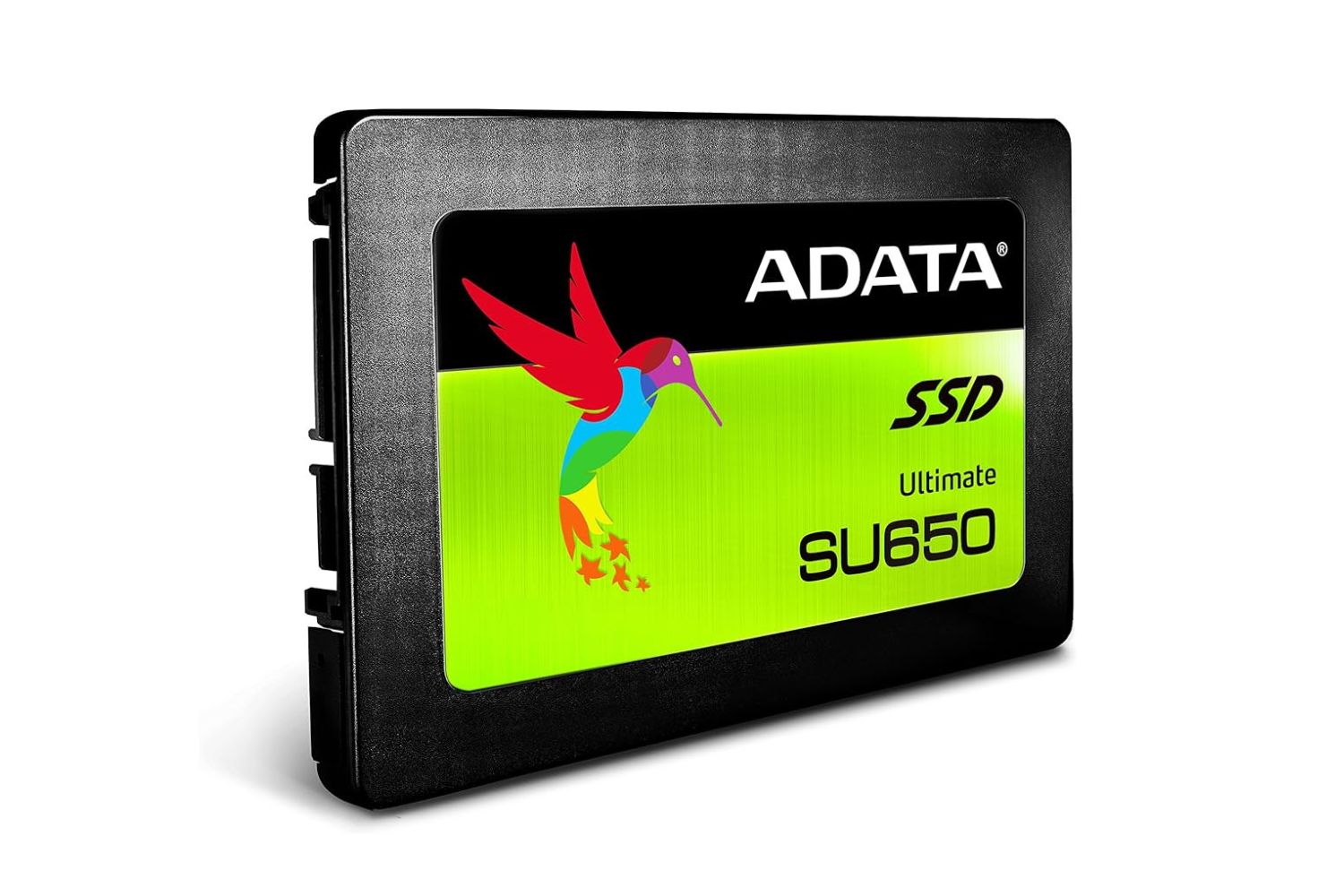Introduction
Welcome to the world of NAND SSDs! In this digital age, where data storage and access speeds are of paramount importance, solid-state drives (SSDs) powered by NAND flash memory have emerged as game-changers in the technology industry. These high-performance, reliable, and efficient storage solutions have revolutionized the way we store and retrieve data.
But you may be wondering, what exactly is NAND? And how does it relate to SSDs? In this article, we will explore the fascinating world of NAND flash memory and its role in the creation of SSDs.
NAND (short for NOT AND) is a type of digital logic gate that forms the building blocks of flash memory. Developed by Toshiba in the late 1980s, NAND flash memory has become the go-to technology for non-volatile storage in a wide range of electronic devices, including USB drives, memory cards, and of course, SSDs.
So, how does NAND flash memory work? At its core, NAND utilizes a series of floating-gate transistors to store data. These transistors are arranged in a grid-like pattern, known as a NAND cell, where each cell can store multiple bits of information. By applying electrical charges to the gate electrodes of these transistors, data can be written, read, and erased from the cells.
Now that we have a basic understanding of NAND flash memory, let’s delve into the world of SSDs. A solid-state drive, or SSD for short, is a data storage device that uses NAND flash memory to store and retrieve data. Unlike traditional hard disk drives (HDDs) that utilize spinning disks and mechanical read/write heads, SSDs have no moving parts. Instead, they rely on the principles of NAND flash memory to provide faster access speeds, improved reliability, and reduced power consumption.
The operation of an SSD is quite fascinating. When data is stored on an SSD, it is divided into blocks, which are further divided into pages. To write data, the SSD controller sends a series of electrical pulses to the NAND cells, altering their charge levels to represent binary data. When reading data, the controller measures the electrical charges within the NAND cells to retrieve the stored information.
Now that we have a solid understanding of NAND flash memory and SSDs, it’s time to explore how NAND SSDs stack up against traditional HDDs and discover the advantages and disadvantages of these cutting-edge storage solutions.
What is NAND?
NAND flash memory is a type of non-volatile storage technology that has become widely used in a variety of electronic devices. Non-volatile means that the data remains stored even when the power is turned off, making it an ideal choice for applications that require persistent data storage.
NAND is based on the principles of digital logic gates, with the primary NAND gate being a combination of NOT and AND gates. This gate construction allows for efficient data storage, retrieval, and erasure.
One of the key features of NAND flash memory is its ability to store multiple bits of data in each memory cell. Traditional memory technologies, such as Random Access Memory (RAM), can only store a single bit per cell. In contrast, NAND flash memory cells can store multiple bits, typically ranging from 2 to even 4 or 5 bits per cell, which is known as multi-level cell (MLC) or triple-level cell (TLC) technology.
This multi-bit storage capability significantly increases the storage capacity of NAND flash memory compared to other memory technologies. It allows for more efficient use of space and enables the production of high-capacity storage devices that are compact and lightweight.
Furthermore, NAND flash memory offers fast read and write speeds, making it suitable for applications that require high-performance data access. These fast speeds are due to the lack of any moving parts in NAND flash memory, as data is stored and retrieved electronically.
In addition to its high capacity and fast performance, NAND flash memory is also known for its durability and resistance to physical damage. Unlike traditional hard disk drives (HDDs) that rely on spinning disks and read/write heads, NAND flash memory has no moving parts. This eliminates the risk of mechanical failure and makes NAND-based storage devices more robust and reliable.
Another advantage of NAND flash memory is its low power consumption. Since it does not require any power to maintain stored data, NAND flash memory is highly energy-efficient. This makes it an ideal choice for portable electronic devices such as smartphones and tablets, where battery life is a critical factor.
In summary, NAND flash memory is a versatile and technologically advanced form of non-volatile storage. Its high capacity, fast performance, durability, and low power consumption have made it the favored choice for a wide range of applications, particularly in the creation of solid-state drives (SSDs).
How does NAND work?
Understanding how NAND flash memory works requires diving into the underlying principles of digital logic and semiconductor physics. At its core, NAND operates by utilizing a complex architecture of floating-gate transistors.
Each transistor in NAND flash memory is designed to store a certain amount of charge, representing a binary state of either “0” or “1”. The charge level of the transistor determines the data stored in it. By adjusting the charge levels, NAND can store multiple bits of data in a single transistor, allowing for high-density data storage.
The structure of NAND flash memory consists of a series of memory cells, organized into pages and blocks. Each memory cell contains a transistor and a floating gate that stores the charge. The floating gate is isolated from the control gate, preventing charge leakage and ensuring data integrity.
Writing data to NAND flash memory involves manipulating the charge stored in the floating gates. To write data, a voltage is applied to the control gate, causing the electrons to tunnel through the insulating oxide layer and charge the floating gate. This changes the threshold voltage of the transistor, representing the desired data bit.
Reading data from NAND flash memory involves measuring the charge level in the floating gate. A voltage is applied to the control gate, and by comparing the resulting conduction level of the transistor, the stored data can be determined.
Erasing data from NAND flash memory is a more complex process. It involves applying a high voltage to the control gate, releasing the trapped electrons from the floating gate. This effectively resets the transistor to its initial state, erasing the stored data.
NAND flash memory operates at the block level. This means that to modify or erase a single page within a block, the entire block must be first erased. This can lead to increased write amplification, as data needs to be transferred and rewritten to a new block during the erase process.
One of the challenges with NAND flash memory is wear leveling. As the memory cells can only endure a finite number of write and erase cycles before wearing out, wear leveling algorithms are employed to distribute data evenly across the memory cells. This ensures that no single memory cell is worn out prematurely, prolonging the lifespan of NAND flash memory.
In addition to wear leveling, error correction algorithms and sparing techniques are used to maintain data integrity and compensate for any potential errors that may occur during the read and write processes.
In summary, NAND flash memory operates by leveraging the principles of digital logic and semiconductor physics. Its complex architecture of floating-gate transistors allows for high-density data storage, with the ability to write, read, and erase data. While wear leveling and error correction techniques are employed to ensure optimal performance and longevity, NAND flash memory remains a critical component in various electronic devices.
What is an SSD?
A solid-state drive (SSD) is a data storage device that utilizes NAND flash memory technology to store and retrieve data. Unlike traditional hard disk drives (HDDs) that rely on spinning disks and mechanical read/write heads, SSDs have no moving parts. Instead, they use integrated circuits and NAND flash memory to provide fast, reliable, and efficient data storage.
SSDs are designed to replace traditional HDDs and offer numerous advantages. One of the key benefits of an SSD is its speed. Since SSDs do not rely on mechanical components to access data, they can read and write data much faster than HDDs. This faster access speed results in quicker boot times, faster application launches, and improved overall system performance.
In addition to their speed, SSDs also offer improved reliability. Without any spinning disks or moving parts, there is a reduced risk of mechanical failure. This makes SSDs more resistant to shock, vibrations, and temperature changes, making them an ideal choice for portable devices and areas prone to physical impact.
Another advantage of SSDs is their energy efficiency. By eliminating the need for power-hungry spinning disks, SSDs consume significantly less power than HDDs. This not only helps to extend battery life in portable devices but also reduces electricity costs and environmental impact.
SSDs also excel in terms of size and form factor. Compared to bulky HDDs, SSDs are slim, compact, and lightweight. This makes them suitable for space-constrained devices such as ultrabooks, tablets, and compact desktops. Additionally, SSDs come in various form factors, including M.2 and PCIe, which offer even more flexibility in terms of installation options.
One important consideration when it comes to SSDs is their capacity. While HDDs typically offer larger storage capacities at a lower cost, SSDs are catching up quickly. With advancements in NAND flash memory technology, SSDs are now available in capacities ranging from a few hundred gigabytes to multiple terabytes, catering to the growing storage needs of consumers and professionals.
It’s worth mentioning that SSDs also have a limited lifespan when it comes to read/write cycles. Each NAND flash memory cell can only endure a certain number of writes and erases before it degrades. However, modern SSDs incorporate sophisticated wear leveling algorithms and advanced error correction techniques to maximize the longevity and endurance of the drive.
In summary, an SSD is a data storage device that utilizes NAND flash memory to provide fast, reliable, and efficient storage. With their speed, reliability, energy efficiency, compact size, and increasing storage capacities, SSDs have become the preferred choice for both personal and professional computing needs.
How does an SSD work?
An SSD (solid-state drive) is a storage device that uses NAND flash memory technology to store and retrieve data. Unlike traditional hard disk drives (HDDs) that rely on spinning disks and mechanical read/write heads, SSDs have no moving parts. Instead, they utilize integrated circuits and NAND flash memory to provide fast, efficient, and reliable data storage.
The operation of an SSD involves several key components working together to store and retrieve data. The main components of an SSD include the controller, NAND flash memory chips, and cache memory.
The controller is the brain of the SSD. It manages the data flow between the computer’s operating system and the NAND flash memory chips. It is responsible for tasks such as data encryption, error correction, wear leveling, and managing the overall performance of the SSD.
NAND flash memory chips are the primary storage medium of an SSD. These chips contain numerous memory cells that store the data. Each memory cell can be in a charged or uncharged state, representing binary values of “0” and “1,” respectively.
When data needs to be written to an SSD, the controller receives the data from the computer and divides it into small blocks. The controller then sends signals to the NAND flash memory chips, indicating which cells should be charged or discharged to represent the data. This process is called programming.
Reading data from an SSD involves the reverse process. The controller sends signals to the NAND flash memory chips, and the cells respond by providing the stored charge information. The controller interprets these charges and delivers the requested data to the computer.
SSDs also often include a cache memory, which is a small amount of high-speed volatile memory. The cache memory helps improve the performance of the SSD by temporarily storing frequently accessed data. By keeping this data readily available, the SSD can retrieve it much faster than if it had to read it directly from the NAND flash memory. The cache memory is typically emptied when power is interrupted or when the SSD is shut down.
One of the challenges with NAND flash memory is that it has a limited number of program-erase cycles. Each memory cell can only endure a certain number of writes and erases before it starts to degrade. To mitigate this issue, SSDs employ wear leveling techniques. Wear leveling distributes writes evenly across all the memory cells, preventing any individual cells from wearing out prematurely. This ensures that the lifespan of the SSD is maximized.
Additionally, SSDs use advanced error correction algorithms to detect and correct errors that can occur during data storage and retrieval. These algorithms help maintain the integrity of the data and prevent data loss or corruption.
In summary, an SSD works by using a combination of a controller, NAND flash memory chips, and cache memory to store and retrieve data. The controller manages the data flow, while the NAND flash memory chips store the data. The cache memory helps improve performance, and wear leveling and error correction techniques ensure the longevity and reliability of the SSD.
NAND SSD vs. HDD
When it comes to data storage, there are two primary options to consider: NAND SSD (solid-state drive) and HDD (hard disk drive). While both serve the purpose of storing data, they differ significantly in terms of technology, performance, reliability, and price.
The main distinction between NAND SSDs and HDDs lies in their underlying technology. HDDs use magnetic spinning disks, known as platters, to store data. These platters rotate at high speeds, and read/write heads move across the surface to access the data. In contrast, NAND SSDs use flash memory chips made from NAND technology to store data electronically, resulting in faster access speeds and improved reliability.
One of the primary advantages of NAND SSDs over HDDs is their speed. NAND SSDs can provide significantly faster read and write speeds compared to HDDs. This means that data can be accessed and transferred more quickly, resulting in faster boot times, shorter application loading times, and overall improved system responsiveness.
Additionally, NAND SSDs offer faster random access times, allowing for quicker retrieval of data from various locations on the drive. This is particularly advantageous for tasks that involve multiple small file operations, such as opening applications or searching for files.
HDDs, on the other hand, have traditionally provided larger storage capacities at a lower cost compared to NAND SSDs. While SSDs have been catching up in recent years, HDDs still offer a more cost-effective option for those in need of high storage capacities. However, it’s important to note that the cost gap between the two technologies has been gradually narrowing.
Reliability is another area where NAND SSDs surpass HDDs. Since SSDs have no moving parts, they are less susceptible to mechanical failures, such as disk platter failures or read/write head crashes. This makes SSDs more resistant to physical shocks and vibrations, making them a preferred option for portable devices. Additionally, as NAND flash memory technology continues to advance, SSDs are becoming even more reliable and durable.
When it comes to power consumption, NAND SSDs are more energy-efficient than HDDs. As SSDs do not require any energy to spin disks or move read/write heads, they consume significantly less power. This is beneficial for battery-powered devices, as it helps to extend battery life and reduce energy costs.
It’s worth mentioning that both NAND SSDs and HDDs can experience data loss or corruption. However, the failure mechanism and recovery methods differ between the two technologies. In the case of HDDs, mechanical failures and magnetic media degradation can result in permanent data loss. On the other hand, NAND SSDs typically provide advance warning signs of failure, allowing users to take appropriate measures to back up their data before the drive fails completely.
In summary, when considering NAND SSDs vs. HDDs, SSDs offer superior performance, increased reliability, and lower power consumption. While HDDs still hold an advantage in terms of cost per storage capacity, the declining prices of SSDs are making them an increasingly viable option for a wide range of applications. With their faster read/write speeds, improved durability, and greater energy efficiency, NAND SSDs have become the go-to choice for many consumers and businesses looking for high-performance, reliable storage solutions.
Advantages of NAND SSDs
NAND SSDs (solid-state drives) offer numerous advantages over traditional hard disk drives (HDDs). These advantages have propelled the widespread adoption of SSDs in various applications, ranging from consumer electronics to enterprise-level storage solutions. Let’s explore some of the key advantages of NAND SSDs:
1. Speed: NAND SSDs provide significantly faster read and write speeds compared to HDDs. With no moving parts, SSDs can access and transfer data at lightning speed, resulting in faster system boot times, quicker application launches, and improved overall system responsiveness. This speed advantage is particularly noticeable when it comes to random access, where SSDs excel at retrieving small data chunks scattered across the drive quickly.
2. Reliability: SSDs are more reliable than HDDs due to their lack of mechanical components. Since there are no spinning disks or read/write heads, the risk of mechanical failure is eliminated, making SSDs less susceptible to damage from physical shock, vibration, or accidental drops. Additionally, NAND flash memory technology used in SSDs has advanced error correction mechanisms, enhancing data integrity and reducing the likelihood of data loss.
3. Durability: NAND SSDs are highly durable, making them suitable for rugged environments and portable devices. Unlike HDDs, which can be prone to data loss if subjected to physical shocks or movement, SSDs can withstand harsh conditions without compromising data integrity. Their solid-state construction makes them ideal for use in laptops, tablets, and other portable devices where durability is crucial.
4. Energy Efficiency: NAND SSDs consume less power than HDDs. With no need for mechanical components to spin disks or move read/write heads, SSDs require less energy to operate. This translates to longer battery life for portable devices, reduced energy costs, and a smaller environmental footprint. Lower power consumption is particularly beneficial in data centers and enterprise storage systems, where large numbers of SSDs can result in significant energy savings.
5. Compact Form Factor: NAND SSDs are compact and lightweight, allowing for more design flexibility in devices with limited space. They come in various form factors such as M.2, SATA, and PCIe, making them easy to integrate into different types of devices. This compact size is especially advantageous in ultra-thin laptops and small form factor desktops, enabling manufacturers to create sleek and portable devices without sacrificing storage capacity.
6. Noiseless Operation: Unlike HDDs, which produce noise from spinning disks and moving parts, NAND SSDs operate silently. Their solid-state nature ensures noise-free operation, making SSDs ideal for environments where silence is required, such as recording studios, libraries, or offices where noise can be distracting or disruptive.
7. High-Performance Applications: Due to their fast data access speeds and low latency, NAND SSDs excel in high-performance computing applications. They can significantly reduce data loading times, enabling faster data processing, improved parallel computing, and better responsiveness in tasks such as video editing, gaming, virtual reality, and data analytics.
In summary, NAND SSDs offer several advantages including speed, reliability, durability, energy efficiency, compact form factor, noiseless operation, and suitability for high-performance applications. As technology advances and costs continue to decline, NAND SSDs are becoming the preferred choice for individuals and businesses seeking high-performance, reliable, and efficient storage solutions.
Disadvantages of NAND SSDs
While NAND SSDs (solid-state drives) offer numerous advantages, like any technology, they also have some disadvantages that should be considered. Understanding these drawbacks can help users make informed decisions when selecting storage solutions. Let’s explore some of the key disadvantages of NAND SSDs:
1. Limited Lifespan: NAND flash memory cells in SSDs have a limited number of program-erase cycles. Over time, as data is written and erased, the cells can degrade, leading to potential data loss or reduced performance. However, modern SSDs employ wear leveling algorithms to distribute writes evenly across cells, increasing their lifespan and mitigating this issue.
2. Higher Cost per GB: NAND SSDs are generally more expensive than traditional HDDs when comparing the cost per gigabyte. While the price of SSDs has been decreasing over time, HDDs still offer a more cost-effective option for those in need of large storage capacities. However, it’s important to consider the overall value and performance benefits that SSDs provide, especially for applications where speed and reliability are critical.
3. Write Performance Degradation: NAND SSDs can experience reduced write performance over time as the cells become filled with data. As the drive becomes more occupied with existing data, empty blocks become scarcer, resulting in slower write speeds. This issue is commonly mitigated by implementing TRIM commands and background garbage collection algorithms to optimize performance by efficiently managing used and unused blocks.
4. Data Recovery Challenges: In the event of a complete SSD failure, data recovery can be more challenging compared to HDDs. When an HDD fails, data recovery specialists can often recover data by repairing or replacing the mechanical components. However, due to the complex architecture of NAND SSDs and their intricate data management algorithms, data recovery becomes more complicated, and specialized expertise may be required.
5. Data Retention Period: NAND flash memory, unlike other storage technologies, can experience data retention issues if left unpowered for extended periods. While modern SSDs have mechanisms to curb this issue, it is crucial to periodically power up stored SSDs, especially for long-term archival purposes, to ensure data integrity and prevent potential data loss.
6. Overprovisioning: To ensure optimal performance and improve reliability, NAND SSDs often require overprovisioning. Overprovisioning involves allocating a certain amount of NAND flash memory beyond the advertised capacity of the SSD. This additional space is used for wear leveling, data redundancy, and performance optimization. However, overprovisioning reduces the effective usable capacity of the SSD, which can be a consideration when managing storage requirements.
7. Susceptibility to Heat: When compared to HDDs, NAND SSDs can be more sensitive to heat. High temperatures can affect data integrity and overall drive performance. Therefore, it is essential to consider proper cooling and ventilation for systems incorporating SSDs, particularly in environments with elevated temperatures.
While these disadvantages exist, the advancements in NAND flash memory technology and the increasing popularity of SSDs address many of these limitations. Manufacturers are continually improving SSD designs, implementing advanced algorithms, and extending the lifespan of NAND flash memory. It is essential to evaluate these disadvantages in the context of specific use cases and requirements to determine the most suitable storage solution.
Conclusion
NAND SSDs (solid-state drives) have revolutionized the world of data storage with their speed, reliability, and efficiency. They offer numerous advantages over traditional HDDs, making them the preferred choice for a wide range of applications.
The use of NAND flash memory technology in SSDs enables faster read and write speeds, resulting in improved system performance, quicker boot times, and reduced application loading times. Additionally, SSDs are more reliable and durable than HDDs due to their lack of mechanical parts, making them resistant to physical shocks and vibrations.
Energy efficiency is another significant advantage of NAND SSDs. With no spinning disks or moving parts, SSDs consume less power, leading to longer battery life in portable devices and reduced energy costs in data centers and enterprise storage systems.
The compact form factor of NAND SSDs makes them ideal for space-constrained devices, allowing manufacturers to create sleek and portable devices without compromising storage capacity. Their noiseless operation adds to their appeal, particularly in environments where silence is crucial.
While NAND SSDs offer numerous advantages, they also have some disadvantages to consider. These include a limited lifespan due to the finite number of program-erase cycles, higher cost per gigabyte compared to HDDs, potential write performance degradation over time, and challenges in data recovery in the event of a complete SSD failure.
Despite these drawbacks, continuous advancements in NAND flash memory technology and SSD designs are addressing these limitations, making SSDs an increasingly attractive option for storage needs. As costs continue to decline, NAND SSDs are becoming more accessible and affordable for a broader range of users.
In conclusion, NAND SSDs provide a significant leap forward in storage technology, offering faster speeds, improved reliability, energy efficiency, compactness, and suitability for various high-performance applications. As technology continues to evolve, NAND SSDs will undoubtedly play a crucial role in meeting the ever-increasing demands for efficient and reliable data storage solutions.







